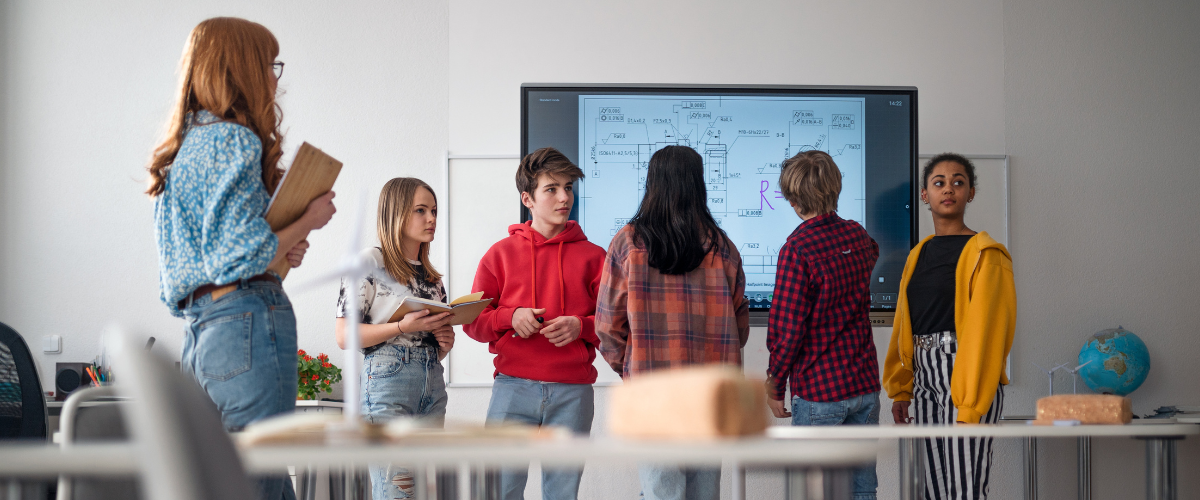For the students of today, creativity and innovation are no longer optional classroom extras. They’re essential and sought-after skills. Students need more than rote memorization abilities and high GPAs to thrive in a world driven by technology, design thinking, and collaboration. Teachers are in a powerful position to inspire original thinking, spark curiosity, and cultivate the kind of problem-solving skills that lead to innovation.
But what does that look like in practice? Let’s explore practical ways to foster creativity in your classroom and real-world creativity and innovation examples for students to help you get started.
Why Creativity and Innovation Matter
Creativity is more than painting or writing. It’s the ability to think differently, question the norm, and imagine new possibilities. Innovation is the next step: applying those ideas in ways that lead to meaningful change.
Together, these skills help students:
- Build confidence in their own voice and ideas
- Approach challenges with curiosity instead of fear
- Collaborate and communicate effectively
- Think critically and develop solutions
When creativity and innovation are embedded in the learning process, students stay more engaged and take greater ownership of their education.
1. Create a Culture of Curiosity
Fostering creativity begins with classroom culture. Students need to feel safe enough to take intellectual risks and try new things. That means:
- Encouraging questions, not just answers
- Rewarding effort and process, not just outcomes
- Allowing for ambiguity and exploration
- Making failure a normal and acceptable part of learning
One simple strategy? Start your day or lesson with a “What if?” question. For example, what if gravity only worked half the time? Let students explore answers freely before guiding the conversation back to scientific principles. It gets them thinking in new ways from the start.
2. Offer Real-World, Open-Ended Projects
Project-based learning is one of the most effective ways to nurture creativity and innovation. These projects often don’t have one correct answer—instead, they challenge students to ask their own questions, collaborate with peers, and use both imagination and research to create something meaningful.
Examples:
Design a community improvement plan. Let students identify a local issue (like littering or traffic safety) and devise a solution using surveys, interviews, and proposals.
Invent a new product or app. Students can brainstorm a common daily problem and pitch a new product idea to solve it. Prototyping with recycled materials or simple coding tools can be included.
Historical “What If” debates. What if a major event had a different outcome? Students can rewrite history and present their version as a mock news report, complete with visuals or reenactments.
These creativity and innovation examples allow students to think outside the box while building research, teamwork, and presentation skills.

3. Integrate the Arts Across Subjects
Creative thinking thrives when students make connections between disciplines. Whether you teach math, science, history, or literature, integrating artistic expression can deepen learning and make abstract ideas more accessible.
Ideas:
- Use visual storytelling to explain scientific processes
- Turn math patterns into musical rhythms or dance routines
- Have students write poetry from a historical figure’s point of view
Art engages the brain in unique ways and helps students process and retain complex information. It also gives students alternative modes of expression, especially those who may struggle with traditional academic formats.
4. Model Innovation in Your Teaching Practice
Students learn by example. When teachers experiment, adapt, and show creative problem-solving in real time, it gives students permission to do the same. That could mean:
- Trying out new tech tools and inviting students to give feedback
- Reimagining your lesson structure based on student interests
- Co-creating classroom rules and learning goals
Let your students see that you’re still learning and exploring too. Innovation is a mindset, not a one-time project.
5. Celebrate Creative Efforts and Risk-Taking
Sometimes creativity doesn’t lead to success on the first try, and that’s okay. Celebrate the attempt, the idea, the “failure” that taught them something new. Build in reflection time so students can talk about what they tried, what worked, what didn’t, and what they’ll do next.
Use tools like:
- Genius Hour – Let students explore a passion project for one hour a week and present their findings or creations to the class.
- Innovation Boards – A classroom bulletin board where students can share cool ideas, sketches, or “half-baked” thoughts and get feedback.
- Creativity Journals – Regular entries where students track their ideas, observations, and moments of inspiration.
These tools create a climate where creative thinking is normalized and appreciated.
By encouraging creativity and innovation, you’re not just enriching your students’ classroom experience; you’re helping them build lifelong skills for future success. Every time you give space for imagination, exploration, and experimentation, you’re shaping the next generation of thinkers, makers, and changemakers. And the best part? You don’t need to reinvent your curriculum. You just need to open the door to possibility.
Envision by WorldStrides is passionate about guiding students each step of the way as they rise to their highest potential through transformative experiences. Our programs offer hands-on experiences that allow high schoolers to test the waters of possible career tracks in:
background-image: a building with the American flag in front of it